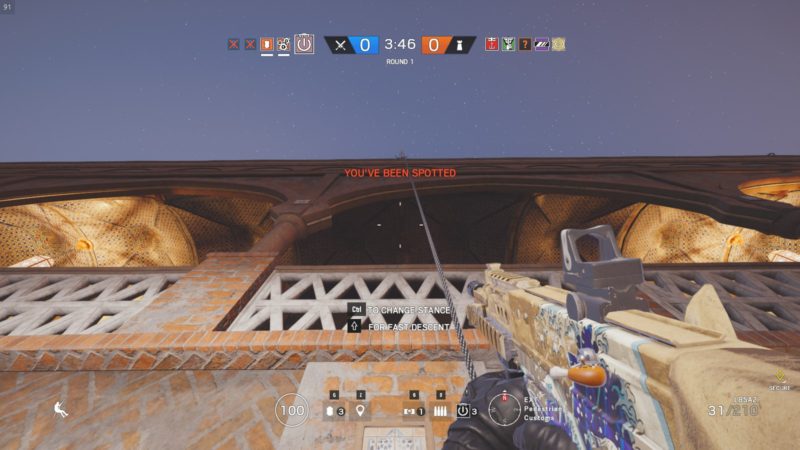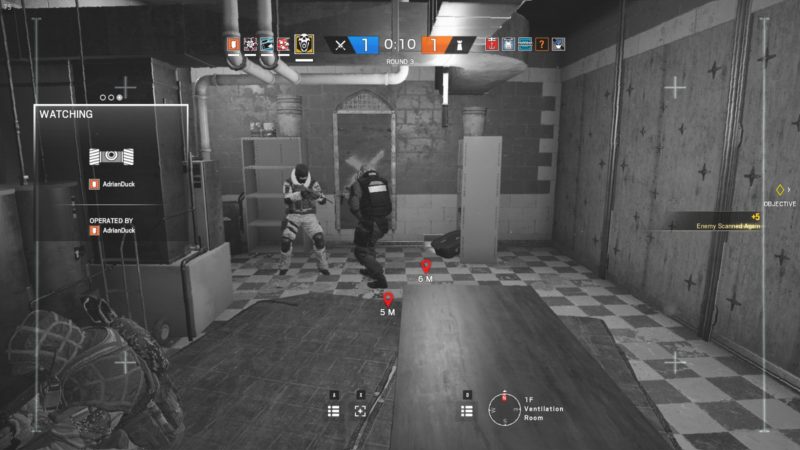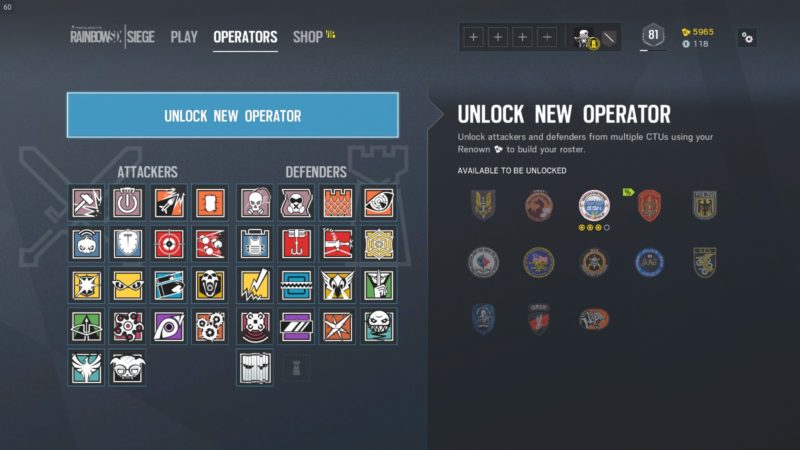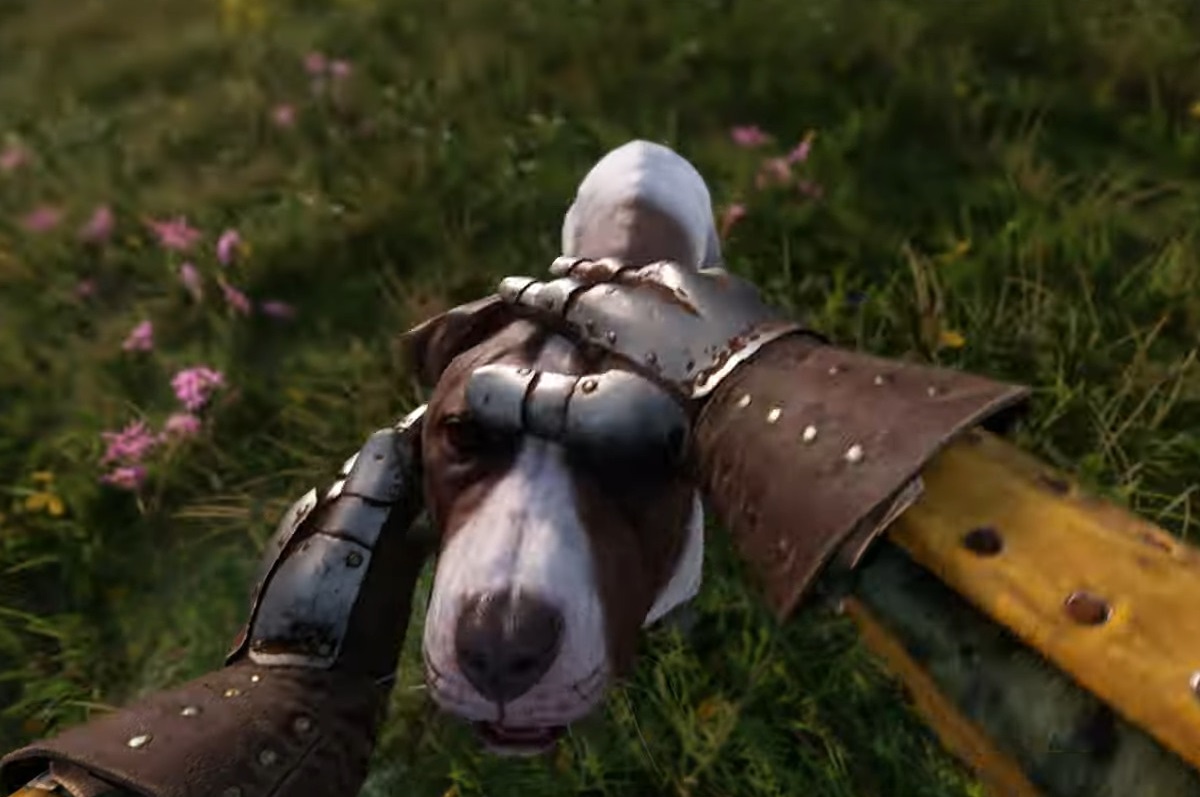When Rainbow Six Patriots was announced, it was so far afield of what I looked for in shooters that it wasn’t even on my radar. I had shifted from the small-scale streets and corridors of Call of Duty and onto the open, rapturous theatres of Battlefield. When it was cancelled and reborn as Siege, I was intrigued but unsold, concrete in my distrust of Ubisoft and unwilling to dip into every-step-a-risk tactical shooters. And then when I played the first open tests on PS4, I found it to be an unfinished and unfulfilling, not quite delivering on what I saw as a lot of promise.
That was a long time ago, and Ubisoft’s confidence was infectious. Siege grew. In 2018, it is something special; a unique tactical experience that has set itself apart from the instant gratification, never-stop-moving killstreak chasers. The core gameplay, the pure attack vs defence and the connective tissue between matches is pure and undiluted in a way that few modern games are. Matches swing between breathless lightning strike shootouts and pixel-watching, hawk-eyed skulking through houses, offices and government administration buildings.
The lack of regeneration, the limited ammo and the panic of separation make for a shooter where every bullet matters, every inch of gained ground a victory and every death a setback. But it also means that any situation can flip in an instant. A seemingly dire 1v5 situation can turn around with a single stray bullet or well-placed explosive. Because Siege is as much about tactical thinking and movement as it is about accuracy and aggression.

The claustrophobic dread of moving through an environment that could be hiding an enemy around every corner is unmatched. On the newer maps, Ubisoft have even pushed into verticality, forcing you to cover every possible angle as you move. Teamwork dynamics change from map to map, hallway to hallway. Siege is a game of adaption; both to new equipment, new teammates and new conflicts.
But it’s not just about the predetermined hallways and angles. Destruction encourages improvisation and experimentation; blowing through walls and ceilings to create new vantage points, or blasting out a barricade as a distraction so you can enter from the other side of the room. Battlefield brought destruction on a Hollywood cinematic scale. Siege scales it down, making it intimate and precise and dangerous.
Every element is heightened by what is arguably the game’s most powerful weapon: information. Simply knowing where an enemy is means everything in a game where walls are an obstacle rather than a limitation. And that’s why drones and the prep phase are so important. Getting even a vague idea of the makeup of the enemy team and how they’re fortifying their positions is vital. The cycle of gaining intel, executing on it and gaining or losing ground is vicious and terrifying, and a single well-placed drone can mean the difference between blind entry and calculated attack.

Add in the operators with their vast array of gadgets and loadouts and there’s a lot of room for synergy, improvisation and variety in any one match. Balance can be wonky-often for months at a time as Ubisoft work out how to fix it-but the benefits of having so many choices are clear. It’s not quite the game of team of composition that Overwatch is, but paying attention to your squad’s overall equipment spread is invaluable. Fail to account for reinforced walls and you’ll find yourself funnelled into chokepoints or caught off-guard trying to sneak through enemy defences. Likewise, not taking an operator that can deal with gadgets is a surefire way to get picked off quickly.
But at the same time, a lot of the rougher edges remain. The UI is slow and clunky, and environmental and equipment bugs can lead to frustrating and unnecessary losses. Perhaps the roughest edge is Terrorist Hunt: a mode that has previously been a staple of the series, left to wallow as an afterthought. It’s thin, the AI is bad and there’s no structure or progression. At most, it’s useful as a quick warmup before diving into multiplayer.
Siege also remains an immensely unfriendly game for new players to get into. The long grind to unlock new operators and the overall weight put on individual players is enough to scare more casual players off. This is especially important as Siege continues to grow, even as it approaches its third year. The Situations-a series of single-player missions designed to ease players into the mechanics-don’t really prep newcomers for “live fire” and Ubisoft haven’t updated or added to them since launch.
Though the game itself is mechanically hostile, the dedication from both the players and the dev team has cultivated one of the most welcoming communities in recent memory. Both sides want the game to last, and both sides realise that means a steady flow of new players. It’s not totally exempt from online toxicity, but it’s a welcome reprieve from the angrier side of gaming.
The holes in Siege are made all the more disappointing when stacked against the support Ubisoft have given the rest of the game. It’s hard not to be impressed by the amount of work the devs have put in: 16 new operators, 7 new maps and a ridiculous number of patches, overhauls and overall “game growing”. Siege has gone from a shaky start with a dedicated fan base to consistently hitting the top played lists on Steam.

Unfortunately, the new content has come at a cost. What Ubisoft calls “the limit of data sizes” has thus far resulted in the removal of two maps. They have promised a rework of how maps are stored, but their permanent removal doesn’t sit right with me. For a game that is so environmental, so predicated on your position and movement, losing even one map is a big hit. The technical problems don’t stop at ”data sizes”, either. The AnvilNext engine, previously used for Assassin’s Creed games, often feels at odds with the kind of game Siege is trying to be. Hitbox and netcode issues have frequently plagued entire operations, especially operators with shields.
But these problems are few and far between. Siege is, at heart, a mechanically and technically solid shooter that continues to set itself apart. Visuals still hold up, particularly on the grittier, urban maps. The destruction is another, more impressive layer on top of that, allowing incredibly granular control over the environment. And the sound. God, the sound. This game redefined how I play shooters, and what I value in them. Headphones are a necessity, for both gameplay and atmosphere reasons. Approaching footsteps, distant gunfire, the methodical breaching of walls and doors throughout a building-the sound of Siege is a dreadful cacophony.
So while Siege is still an imperfect game, it’s the only shooter that has held my interest for this long. The mere fact that it holds up two years after its release speaks volumes, and the dedication from the community and the devs is sure to keep it going for a good long while. The perfect storm of great map design, pin-point accurate destruction, tactical combat and industry-leading sound design makes for one of the most consistently engaging multiplayer games on the market.







